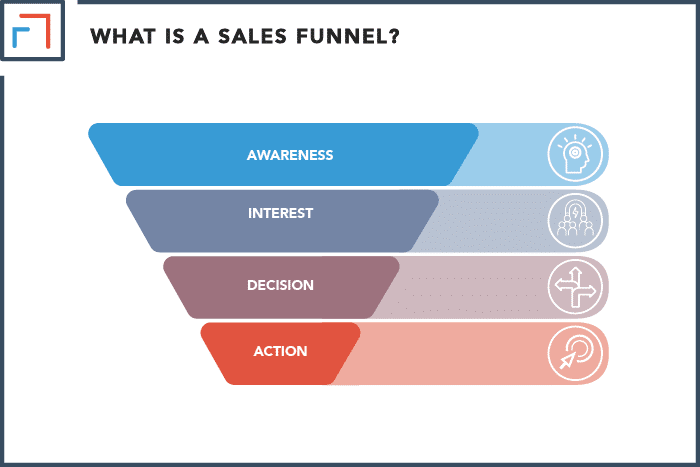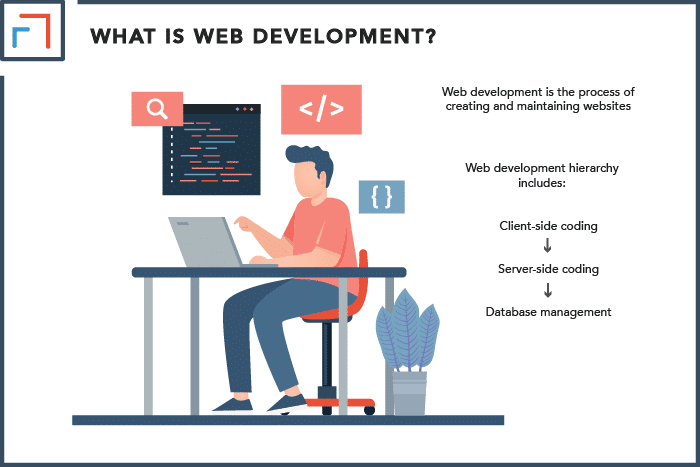Selling products and services online is the new norm for most businesses. However, to make successful sales on the internet, you have to understand the differences between funnel design and web development. Both are important, but they have some fundamental differences.
Funnel design is for building a funnel while web development is for building a website. You don’t need any special training to design a funnel. However, you need to learn at least three programming languages to become a web developer. Funnels are sales-related while websites can serve any purpose.
This article will define the job of funnel designers and web developers so we can compare and contrast these roles. Read on to learn more about these important jobs.
What Is Funnel Design?
Funnel design is a broad term that describes the process of creating a sales or marketing funnel. Funnels are marketing tools that help businesses attract new customers and build relationships with them. These funnels are then customized to meet the needs of a certain business.
Funnel designers are also responsible for conducting funnel analysis, updating the funnel over time, and improving its efficiency.
The Sales Funnel
A sales funnel is a series of pages and steps that a customer goes through before making a purchase. While many words can be used to describe a sales funnel, it’s like a physical funnel with a wide top (to attract a lot of traffic) and a narrow bottom (to focus marketing efforts on the few people that convert).
In a sales funnel, you have many prospects who join the funnel through various touchpoints.
These touch points might include social media posts, affiliate blogs, or even a google search.
The touchpoint then leads them to the next step which might be an upsell with an optional downsell.
For instance, funnels might include a landing page urging visitors to buy or sign up for your product.
Most funnels also include a page or form where they can collect visitor’s contact information.
Businesses can use this information to add new people to their mailing list and bring them back into the funnel.
Therefore, a funnel’s design is made up of 4 main stages:
1. Awareness: This is the first time the prospect learns about your product or service.
It can be from a Facebook post shared by a friend, sponsored tweet, a YouTube ad, or even a Google search.
Sometimes the prospect might convert immediately if they need the product urgently.
However, the awareness stage is often like courtship, therefore, most prospects will want to learn more about your product or service before buying or subscribing.
As a result, businesses try to “woo” them into the next step of the funnel.
2. Interest: When prospects are in the interest stage, they already know about your brand and what you offer.
However, they are also shopping, doing comparisons, and reviewing their options.
This is the best time to intervene with some incredible content that persuades, but doesn’t coerce them into buying.
3. Decision: At this point, the customer is ready to buy but they have a few options in mind, including yours. This is the time to make your best offer.
You can provide free shipping or a bonus product. Just try and make it irresistible so that the prospective is excited to take advantage of it.
4. Action: At the bottom of the funnel, the customer acts and buys your product or subscribes to your service.
However, just because the customer has converted, it doesn’t mean your work is done.
You should now concentrate on customer retention by introducing them to your other products or services.
You can also offer free shipping or discounts for returning customers.

What Is Web Development?
Web development is the process of creating and maintaining websites. It encompasses web programming, web publishing, and database management. It also covers the creation of applications that work over the world wide web (web apps).
Although the realms of web development and funnel design may seem similar, there are quite a few differences.
Web development focuses on the non-design aspects of building a website, which includes writing markup and coding.
Here’s a breakdown of the web development hierarchy:
- Client-side coding.
- Server-side coding.
- Database management.
Most web developers use Javascript, HTML (Hypertext Markup Language), and Cascading Style Sheets (CSS) to build websites from the ground up.
HTML is the website’s skeleton. You can think of it as the foundation that everything else is built upon.
It defines the web page’s format, layout, and other critical components.
Although it’s possible to build a website on HTML alone, it would be a barebones site without any style or functions.
For these functions, the site has to be enriched with Javascript and CSS. CSS is used to style the website.
It styles the content using a set of files that are maintained throughout the site.
Therefore, you can change an element (such as the color of buttons on every page of the website) in a single CSS file.
Javascript is a programming language that’s used for the backend elements of a website.
It can be used to add games or alter the appearance of menus, icons, and animations within the site.
There are many other programming languages, but these three are the most common and fundamental ones.

Types of Web Developers
Web developers are basically divided into back-end developers, front-end developers, and full-stack developers.
A front-end developer focuses on the visual aspects of a website such as the navigation bar, and layout.
They also deal with the site’s interactivity and work to merge all its elements.
Back-end developers deal with the less visible aspects of the website. They must ensure it runs smoothly and manage the database system and its hosting services.
Full stack developers, on the other hand, can do both front-end and back-end tasks.
These are versatile developers who can build a successful website from the ground up on their own.
Differences Between Web Development and Funnel Design
Funnel design and web development are quite different.
For instance, funnel designers focus on marketing businesses while web developers can create any type of website, including personal and nonprofit websites.
Web development also focuses on the non-design aspects of a website, while funnel design encompasses all the aspects of a sales or marketing funnel.
Furthermore, you don’t need any specialized training to design a sales funnel. You can use an online tool to create a funnel from scratch.
On the other hand, you need to learn three programming languages (HTML, CSS, and Javascript) to develop a website.
Funnel Design vs Web Development
| Funnel Design | Web Development |
|---|---|
| Focuses on sales and marketing | Can be used to make any type of website |
| Used to develop all aspects of a sales funnel | Focuses on non-design aspects of a website |
| Uses online tools | Requires specialized training |
Wrapping Up
Web development is an important part of creating an online business. However, funnel design is pivotal to helping the business make money from online customers.
These functions can work hand in hand, but they are fundamentally different.
Web developers build a functional website for the business while funnel designers help the business turn prospects into customers and retain them.
Sometimes, web developers can become funnel designers, but they don’t need any special training to design a funnel.
With the wide variety of funnel tools available, anyone can create a funnel and optimize it to convert.
It takes practice, but is easier to create from a funnel from scratch instead of a website.
